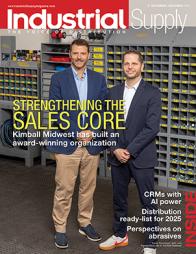It's the players on the field, not the scheme you run

by Jason Bader
In times of prosperity, such as we are experiencing now, many companies turn their thoughts toward enlarging the base of operation. Growth through geographic expansion is attractive and there is market share to be taken. Sadly, many companies fail to reach their potential due to a lack of promotable bench employees. In a recent conversation with a long time client, we realized that the No. 1 barrier to growth was the learning curve required to understand his business. In order to realize his potential, his company will have to invest in recruitment, retention and education like never before.
During this same coaching session, this client shared an interesting story. A friend of his was an assistant coach for a well-known college football program in the late ’70s. They had fallen on hard times and needed some answers to help them turn the program around. The head coach decided to seek counsel with the best in the business, famed college football legend Bear Bryant. The two were granted an audience with the Bear and headed down to Tuscaloosa, Ala. As the story goes, the two sat down in coach Bryant’s office and exchanged pleasantries for a bit. Not one for idle chit chat, the Bear asked his two visitors to get on with it. The head coach started into his questions about Alabama’s various schemes.
“So coach, y’all run a 4-3 defense. I mean, how is it that y’all just shut down offenses?”
Coach Bryant responded with something like, “Well yeah, we run that defense pretty well and have had a lot of success, but we have some really great players who can go after the ball.”
The visiting head coach talked about different offensive schemes and coach Bryant gave a short answer like, “We’ve had a lot of success running that, but we recruit some really talented athletes.” The visiting head coach kept peppering the Bear with questions about blocking and formations while receiving short answers about players and talent. Finally, coach Bryant had enough. He cut the head coach off and said, “Are you two the dumbest (expletives) on the planet? You come down to my office, ask for my help and don’t listen to a thing I am saying! Look, it doesn’t matter what scheme we run. We win football games because we recruit the best and put the most talented players on the field, period.”
Lessons learned
Being in the consulting field, I get a lot of questions on how to structure a distribution company. I have worked with companies who go to market primarily through outside sales representation. In this scheme, the most talented players tend to be in the field. I have worked with companies that have a much more dominant inside sales team. They believe that the talent pool should be in a position to maximize interaction with the customer. Web-based companies believe that the user experience is where the talent should lie. Some distributors cater to a walk-in trade, while others do a majority of their business through the back door. Some companies deliver their own products, while others rely on common carriers. All of these successful operating schemes have one thing in common, good people. Regardless of the scheme you choose, your ability to succeed will be hampered by a lack of talented, loyal, well-trained people.
Improving your pool of talented employees begins with recruiting. This is really a selling job and, if there is one thing distributors know how to do, it’s sell. Managing their money, not so much. If distributors are great selling machines, why are they so lousy at recruiting? First, they don’t see the recruiting process as a full-time endeavor. They tend to start looking when they have a vacancy. Talent doesn’t wait for a position to open up at your company. Successful companies recruit year-round. Just because you engage with a talented prospect does not mean that you are required to hire them. Maintaining a relationship with these prospects will make it easier to bring someone in should the need arise. As you all know, it is a very uncomfortable feeling to be held hostage by someone you want to get rid of, but simply can’t because you don’t have anyone to backfill. Although you don’t have to hire a strong prospect upon first meeting that person, you might not want to let a good one get away. If this person appears to fit the culture of your company, challenge yourself to make a slot. Again, it’s all about the people.
Create a value proposition
The other reason that most distributors have a difficult time recruiting is that they have not identified their value proposition. What unique offering do you present to the candidate? Remember, this is a sales function. Many distributors spend a great deal of time working on a value proposition to their customer in the supply chain. They know what services they offer and have found a myriad of ways to sell value. This really isn’t too different. The focus has just changed.
Creating a value proposition requires the company to identify the reasons a candidate should work for your company versus another. You can start with the basics. List out the benefits, such as insurance, retirement plan offerings and a competitive wage. Once tangible benefits are identified, then the real challenge begins. How do you articulate culture or environment? Rather than guessing, ask the people that work for you. Simply put, why do they come to work every day? Once you get past some of the flip answers about a paycheck, I suspect that you will discover several reasons that will become key points in your value proposition.
I have always believed that a defined progression or opportunity for advancement is a strong selling point for any organization. How do most people advance in your company? Are there any dead-end positions? What is the level of satisfaction in these positions? Without the ability to advance, these positions can become a cancer in your company. Having a well-defined progression for advancement and a solid employee development program will make your company stand out from the pack.
When you are ready to put your value proposition to work, it’s time to go after the best candidates possible. Create the best pitch for your company. You may only have one shot to get someone to look at your company. Remember, the best candidates may already have a job. They usually do. With these candidates, your pitch changes a bit. Your mission is to create unease. This may sound a little counterintuitive to all the previous suggestions. The unease I speak of is doubt. After the pitch, you are hoping to create a seed of doubt that his or her current situation isn’t as great as once thought. There just might be a greener pasture out there. Furthermore, your company might have the acreage.
Whether you run the spread, the pistol or the I-formation, you will never be successful if you don’t have the best players on the field. Good luck and know that I am always here to help.
 Jason Bader is the managing partner of The Distribution Team, a firm that specializes in helping distributors become more profitable through strategic planning and operating efficiencies. The first 20 years of his career were spent working as a distribution executive. Today, he is a regular speaker at industry events and spends much of his time coaching individual distribution companies. For more information, call (503) 282-2333 or contact him by email at Jason@Distributionteam.com. Also visit The Distribution Team’s website at www.thedistributionteam.com.
Jason Bader is the managing partner of The Distribution Team, a firm that specializes in helping distributors become more profitable through strategic planning and operating efficiencies. The first 20 years of his career were spent working as a distribution executive. Today, he is a regular speaker at industry events and spends much of his time coaching individual distribution companies. For more information, call (503) 282-2333 or contact him by email at Jason@Distributionteam.com. Also visit The Distribution Team’s website at www.thedistributionteam.com.
This article originally appeared in the March/April 2015 issue of Industrial Supply magazine. Copyright 2015, Direct Business Media.













